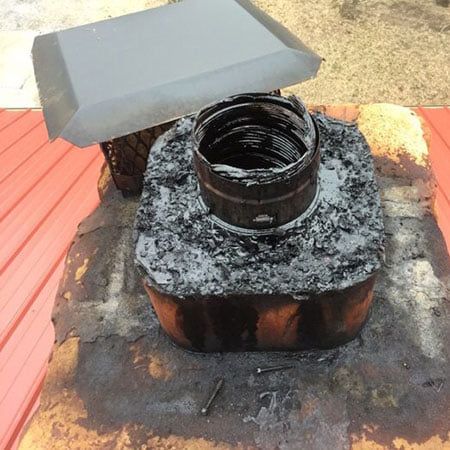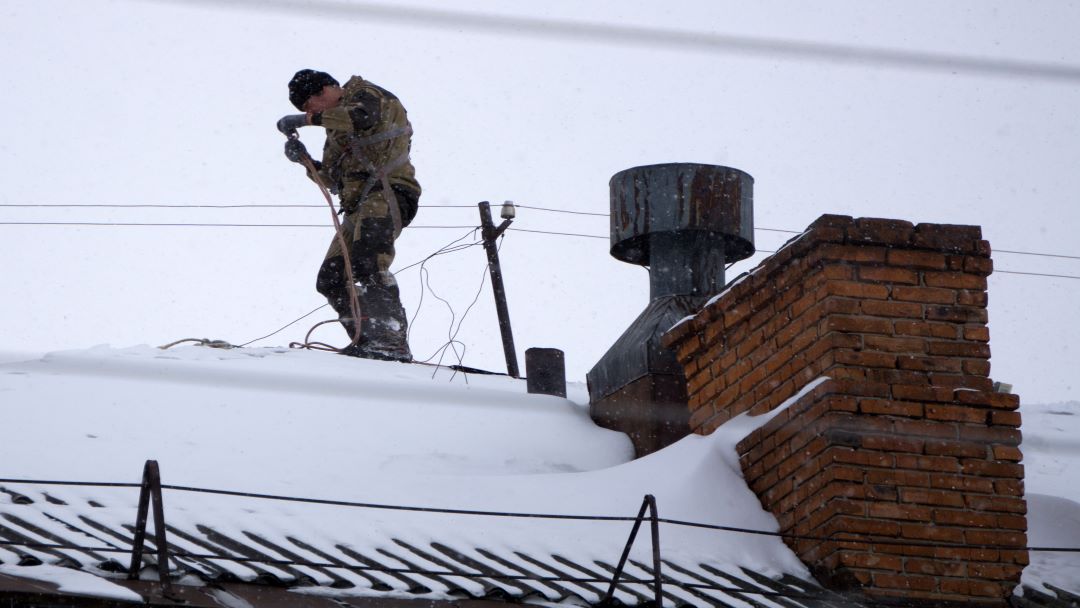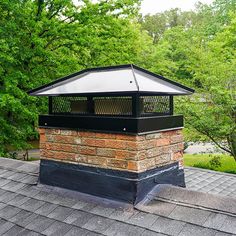A chimney liner is a critical component of your chimney that lines the inside of the flue. Stainless steel is a popular material used for chimney liners. But are stainless steel chimney liners safe?
In this post, we will examine the safety of stainless steel chimney liners. We’ll look at the purpose and function of chimney liners, the benefits of stainless steel, and how stainless steel chimney liners help protect your home.
What Is a Chimney Liner?
A chimney liner is a lining installed inside a chimney to increase chimney efficiency and carry poisonous gases out of your home.
- It also prevents the excess buildup of creosote, which is flammable.
Chimney liners can be flexible or rigid. The liner increases the surface area of the chimney.
- This makes it easier for hot gases to flow out of the flue instead of forming smoke in gaps.
The main purposes of chimney liners are:
- To protect the house from heat transfer to combustible substances
- To protect the masonry from the destructive byproducts of combustion
- To provide an appropriately sized flue for prime appliance efficiency
Chimney Liner Benefits
Chimney liners provide many important benefits:
- Minimize the risk of accidental fires caused by heat transfer
- Prevent poisonous gases like carbon monoxide from entering the house
- Allow for proper flue sizing for efficient appliance operation
- Protect masonry from damage caused by heat and combustion byproducts
- Reduce buildup of creosote and other flammable deposits
Why Stainless Steel Liners?
Stainless steel is a popular material choice for chimney liners. Here are some key benefits of stainless steel chimney liners:
Safety
- Stainless steel does not crack or deteriorate like clay tile liners
- Provides a smooth, seamless surface to prevent leaks of smoke and gases
- Highly durable and corrosion resistant
Performance
- Retains heat well to maintain good draft
- Allows for insulation to reduce cold air drafts
- Easy to clean to remove creosote buildup
Convenience
- Flexible stainless steel liners are easy to install
- Can be used for both wood-burning and gas fireplaces
- Long lifespan of 20-25 years before needing replacement
Affordability
- Lower installation costs than clay or concrete liners
- Low maintenance costs over lifetime of product
Stainless steel liners offer key safety, performance, and cost benefits compared to other liner materials.
A stainless steel liner is the safest material available because it won’t develop cracks the way clay tile liners do. The liner is completely sealed, protecting your home from harmful creosote, carbon dioxide, and smoke.
A stainless steel liner is the safest material available because it won’t develop cracks the way clay tile liners do. The liner is completely sealed, protecting your home from harmful creosote, carbon dioxide, and smoke.https://atlantachimneydoctor.com/blog/the-benefits-of-stainless-steel-chimney-liners/#
How Stainless Steel Liners Enhance Safety
Stainless steel chimney liners enhance safety in several key ways:
- Prevent leaks – Stainless steel does not crack or develop gaps like clay tile liners, preventing leaks of smoke, toxic gases, and sparks.
- Protect from fire – Stainless steel resists corrosion and withstands high temperatures. It contains heat and sparks to prevent combustibles from catching fire.
- Allow proper draft – Correct draft carries smoke up and out of the chimney. Improper draft can lead to backdrafting of smoke into the home.
- Reduce creosote buildup – Stainless steel stays smoother than other liners, resulting in less creosote accumulation. Excess creosote is highly flammable.
- Easier cleaning – Smooth stainless steel allows for easier cleaning to remove creosote and improve safety.
By containing heat and draft, resisting corrosion, and reducing creosote, stainless steel liners keep chimneys operating safely.
Proper Installation of Stainless Steel Liners
To get the full benefits for safety, stainless steel chimney liners must be properly installed:
- Hire a certified professional for installation
- Ensure proper sizing – liners must meet size requirements for the chimney and heating appliance
- Seal connections fully to prevent leaks at joints
- Insulate liner if possible to maintain heat and improve draft
- Support the liner correctly so it stays centered in chimney
- Use Listed products that meet quality testing standards
Correct installation ensures stainless steel liners provide their designed safety and performance benefits.
Caring for Your Stainless Steel Liner
Proper maintenance is key to gaining the full benefits from your stainless steel chimney liner:
- Have your chimney professionally inspected at least annually
- Schedule regular cleanings based on usage patterns
- Clear any creosote or debris from liner surface
- Check liner for any corrosion or damage
- Repair small leaks or gaps promptly
- Replace liner if corrosion or damage is beyond repair
With proper installation and maintenance, a stainless steel liner will provide many years of safe and efficient service.
Conclusion
Stainless steel is considered one of the safest and most effective materials for chimney liners. Key benefits include:
- Enhanced safety from leaks, fire, and creosote buildup
- Good heat retention and corrosion resistance
- Ease of cleaning and maintenance
- Long lifespan with proper care
By understanding the purpose of chimney liners and installing and maintaining stainless steel liners properly, homeowners can protect their chimneys and homes. Stainless steel liners are a smart investment for safety, efficiency, and peace of mind.
FAQs About Stainless Steel Chimney Liners
What are the benefits of a stainless steel chimney liner?
Stainless steel liners enhance safety by preventing leaks, retaining heat, reducing creosote buildup, and resisting corrosion. They also provide good efficiency, easier cleaning, long lifespan, and affordability.
How does a stainless liner improve safety?
It contains heat and sparks, resists corrosion, allows proper draft, reduces creosote buildup, and prevents leaks better than other liner materials. This helps prevent fires and leakage of toxic gases.
How often should I clean my stainless steel liner?
An annual professional cleaning is recommended. Cleaning frequency depends on use, with more frequent cleaning needed for frequently used fireplaces that burn wood.
How long should a stainless steel liner last?
With proper installation and maintenance, a stainless steel liner should last 20-25 years before needing replacement. Minor repairs may be needed over its lifespan.
When is it time to replace my chimney liner?
Look for signs of corrosion, gaps or warping, creosote buildup that can’t be removed, blockages, reduced draft, or failure to contain smoke/gases. A professional inspection can determine if replacement is needed.
Can a stainless liner be installed in any chimney?
Stainless steel liners are very flexible so they can be installed in almost any chimney. They are a good option for replacing or upgrading liners in existing masonry chimneys.
Should I insulate my stainless steel liner?
Insulation around the liner helps maintain heat for better draft and efficiency. It also reduces creosote buildup. So insulation is recommended but not absolutely required.
Is professional installation recommended?
Yes, have a certified chimney professional handle the installation to ensure proper sizing, sealing, insulation, and support for maximum safety and performance.
What maintenance is required for stainless liners?
Have an annual professional chimney inspection. Clean the liner when needed to remove any creosote or debris. Also check for damage, leaks, or blockages, and repair minor issues promptly.
When should a stainless liner be replaced?
Look for extensive corrosion, large gaps or holes, extreme creosote buildup, blockages, smoke leakage, and loss of structural integrity. A full replacement is likely needed if you see these issues.











